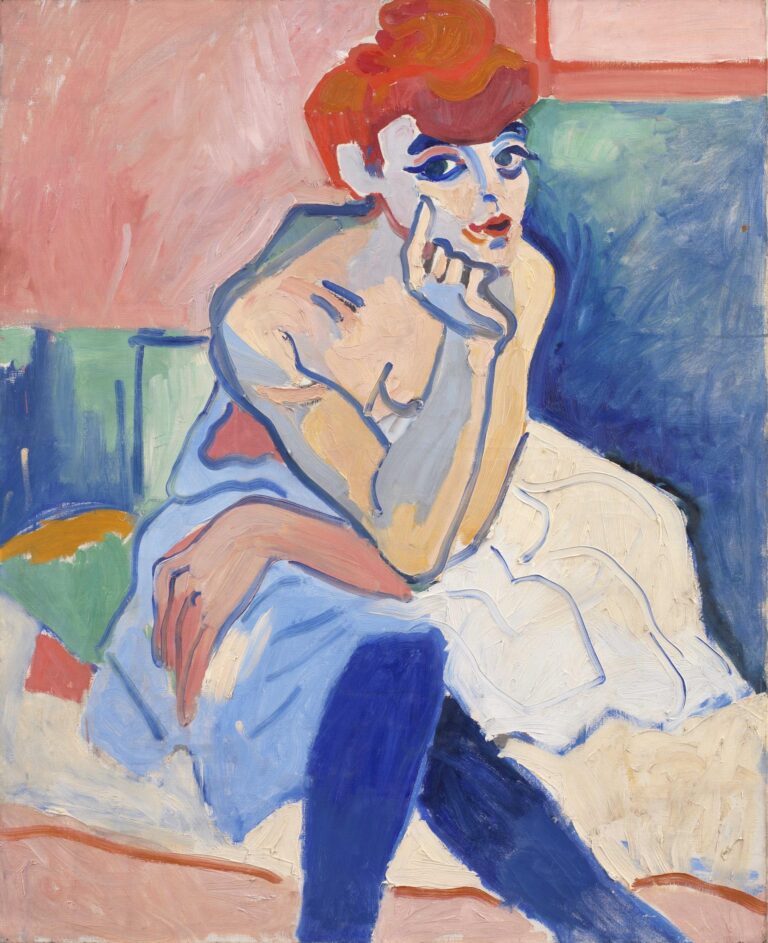In the middle of Paris in the early 1900s, a group of Avant-garde Artists started a trip that would change the art world forever. They used bright and crazy colors to make Fauvism. We learn more about what Fauvism was all about, what it meant, and how it affected people around the world by looking at “Matisse, Derain and their Friends: The Parisian Avant-garde 1904–1908” at the Kunstmuseum Basel.
Avant-garde Artists: A Splash of Color: Fauvism Shown Off

Instead of logical manifestos, artists like Matisse and Derain took risks and tried new things, which led to the rise of Fauvism. The name “Les Fauves” was first meant as an insult, but it became a proud badge of honor for these artists. Their radical ideas came out in a flood of pure colors that freed art from the rules of tradition.
Matisse’s “Nu aux souliers roses” (1900) shows a revolutionary spirit. The dull studio walls are turned into bands of bright color that draw attention to the naked form. Vlaminck and Derain worked together along the Seine, and Derain and Matisse were amazed by the light from the Mediterranean in Collioure. This led to a riot of free-flowing color. After the Salon scandal of 1905, Braque, Dufy, and Friesz joined the movement. This made Fauvism a strong group of ideas influenced by Post-Impressionism and Neo-Impressionism.
Colors that Make You Think: Fauvism and the City of Lights
The artist neighborhoods of Montmartre and Montparnasse were full of sex and partying, which gave the Fauvists more ideas. “La Femme en chemise” by Derain (1906) is a striking picture of the quarters’ busy life, while “Le Hussard” by Kees van Dongen (1907) shows drag queen Claude Modjesko at full speed. It looks like Fauvism wasn’t just a fresh look; it was also a celebration of all the different things that people do in life.
Avant-garde Artists: Fauvist Femininity: The Bold Brushstrokes of Émile Charmy
Among all the crazy creativity, Émilie Charmy stands out as a great but less well-known artist. Her pictures of the coast of Corsica in 1910 and the avant-garde art dealer Berthe Weill show a strong point of view. But it is her daring self-portrait of 1906, showing her lying on a couch with one breast bare, that breaks social rules and makes her a trailblazer.
Avant-garde Artists: Beyond Boundaries: Taking From Other Cultures and Still Life
Fauvists didn’t follow any rules when they painted, so they chose still life, which is the lowest genre in the academic order. Dufy’s flower piece is so surreal that it’s hard to tell what the flowers and leaves are. In 1905, Vlaminck bought an African mask. This was an example of appropriating another culture, and it inspired his work “Nu rouge.” The Fauvists got ideas from primitive art, postcards, and signs, as well as from their egalitarian, outsider point of view.
Avant-garde Artists: A Worldwide Affair: The International Touch of Fauvism
Even though Fauvism was most popular in Paris, its impact was felt all over the world. Unfortunately, the show doesn’t focus on the international context. And only includes a brief section on Blaue Reiter artists such as Kandinsky and Münter. As you can see from the list of names, the Fauvists didn’t follow any rules in the early 1900s.
The Kunstmuseum Basel’s show “Matisse, Derain and their Friends. The Parisian Avant-garde 1904–1908″ shows a world of bright colors, bold lines, and social problems. People are still interested in Fauvism’s short but important rule. Which reminds us that sometimes it’s the wild ones who leave the most lasting marks on history. The show is a reminder of how brave the Fauvists were to break artistic rules and spark a creative explosion that will be remembered for a long time.





